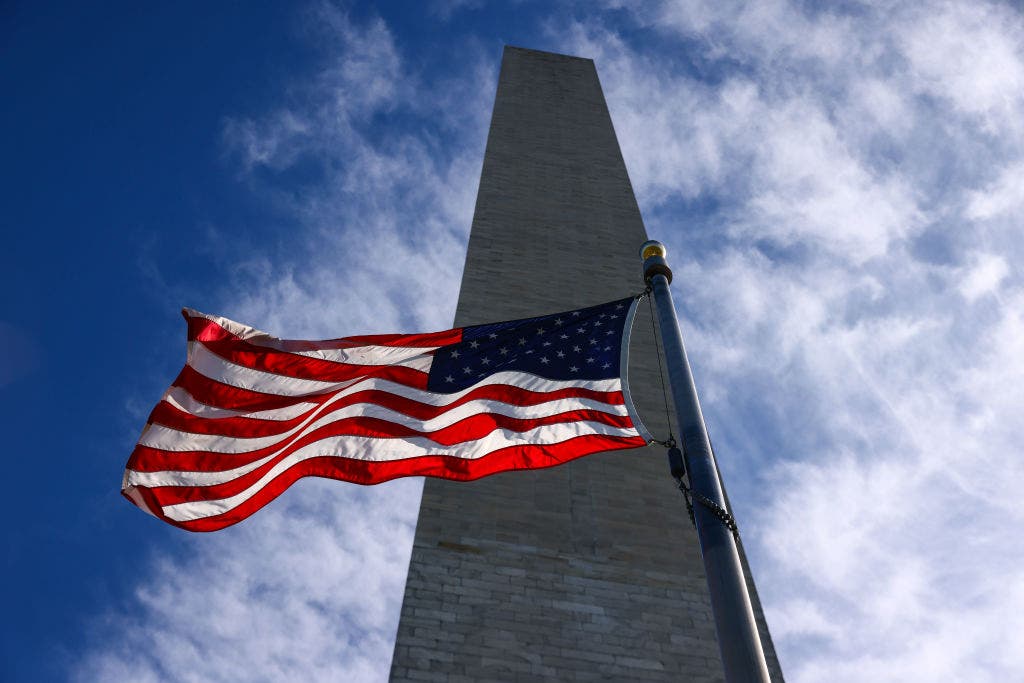The Washington Monument, a marble-faced granite obelisk honoring the first U.S. president, George Washington, opened to the public in Washington, D.C., on October 9, 1888. Standing at 555’ 5 1/8″ tall and weighing 81,120 tons, the monument is considered the most prominent feature of the city’s skyline. Made of white marble blocks, the structure ranges in thickness from 15’ at the base to 18″ at the top, changing color at 150 feet where construction stopped between 1856 and 1876. Visitors can climb the 896 steps inside to the observation level or take the elevator.
Construction of the Washington Monument had setbacks, taking nearly four decades to complete in the mid-19th century due to controversy and a lack of funds. The plans began in 1835 when the Washington National Monument Society appointed agents to collect funds from the public. The cornerstone was laid on July 4, 1848, in a ceremony attended by 20,000 people, with President James K. Polk, Dolley Madison, and future presidents in attendance. Congress appropriated $2 million in federal funds on August 2, 1876, to complete the construction, with Thomas Lincoln Casey appointed as engineer-in-charge.
On November 18, 1845, a design by Robert Mills was adopted by the Washington National Monument Society, marking the beginning of construction. The capstone and aluminum point were set on December 6, 1884, signifying the completion of the monument. After a major restoration project in the 1990s, the Washington Monument reopened in 2001, surrounded by 50 American flags representing each state. It closed temporarily after an earthquake in 2011 but reopened in May 2014, now allowing visitors to reserve a place online to ascend to the top via elevator or climb the steps.
The Washington Monument has become an iconic symbol of the nation’s capital, offering panoramic views of Washington, D.C. Visitors can explore a small museum at the top and appreciate the significance of the monument from various vantage points throughout the city. The structure, built in two phases in 1848 and 1884, was dedicated in 1885, attracting tourists and history enthusiasts to learn about its construction process and historical significance. Despite its challenging history and construction delays, the Washington Monument remains a symbol of the enduring legacy of America’s first president.
The successful completion of the Washington Monument marks a significant milestone in honoring the legacy of George Washington. The dedication and perseverance of those involved in the construction, coupled with the financial support from the public and Congress, enabled the monument to stand tall as a testament to the nation’s founding father. As a symbol of national pride and unity, the Washington Monument continues to attract visitors from all over the country, offering a glimpse into the history and architectural significance of one of America’s most iconic landmarks.


